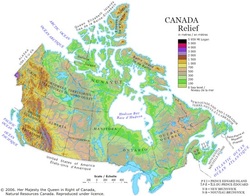Relief And Elevation
Key Points

1) Relief refers to the differences in elevation of the Earths surfaces.
2) Mountains cause precipitation, because clouds run into them and release water.
3) Temperature drops as elevation rises.
http://wiki.answers.com/Q/What_is_Relief_rain
2) Mountains cause precipitation, because clouds run into them and release water.
3) Temperature drops as elevation rises.
http://wiki.answers.com/Q/What_is_Relief_rain
Summary
Weather is affected by the elevation of an area, as well as the mountains in the area. In an area with high elevation, the weather is cooler. If you are living near a mountain, you are more susceptible to relief rain because of the elevation of the mountain.

